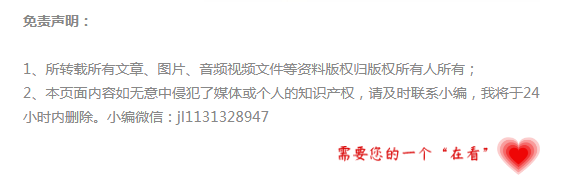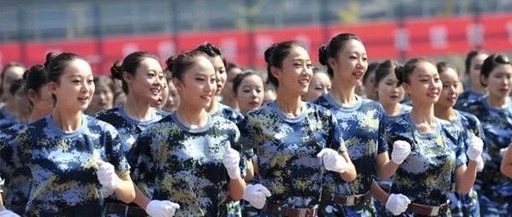
It is that time of year again, the annual university freshman enrollment season. With the release of new student data from various universities, many have noticed that classes increasingly feature more females than males, with some colleges having only one male for every seven females.
In recent years, the rapid increase in the proportion of female students has become a new trend in many universities, attracting widespread social attention. What is the current gender ratio in universities? Why is there a phenomenon of “yin sheng yang shuai” (阴盛阳衰, where the feminine is dominant over the masculine)? Our reporter conducted an investigation.
Complaints: Too Many Female Students Dormitory Space Insufficient
On the morning of September 5, Zhao Keke, a freshman of the 2019 cohort, arrived at the School of Journalism and Communication at Hunan Normal University. However, he was surprised by the scene. A line of about 10 meters formed at the registration area, almost entirely composed of females. “From the latest class assignment, it seems that each class has no more than 8 boys,” Zhao joked, “If there’s heavy lifting, the boys are going to be in trouble!”
According to the 2019 freshman data released by the admissions office of Hunan Normal University, the total number of new students this year is 6074, with 4064 females and only 2010 males, resulting in a gender ratio of 1:2. Among the colleges, the College of Arts has the highest female ratio at nearly 1:7, while the College of Physical Education, which is male-dominated, is also approaching a near 50% female ratio.
“The number of male and female students at our school is basically equal, which was unimaginable ten years ago,” said a teacher responsible for admissions at Hunan University of Science and Technology. In the sciences, males have traditionally outnumbered females; ten years ago, having 30% female students was considered good, but now it is nearly 50/50. According to the 2019 admission data from Hunan University of Science and Technology, the total enrollment is 3823, with 1984 males and 1839 females, resulting in a gender ratio of 1.1:1.
On September 3, a junior student from a normal university in Changsha complained online: “Due to the gradual increase in the number of female students in recent years, last year the school converted one male dormitory building into a female dormitory; this year, another male dormitory building is likely to be repurposed as well.”
In fact, this situation is not an isolated case in a few universities but a widespread phenomenon. According to statistics from the Ministry of Education, since 2009, when the proportion of female students in regular undergraduate programs first exceeded that of males, the gap has continued to widen. As of 2018, the number of female university students has exceeded that of males for ten consecutive years.
Reasons: Current Educational Assessment Models Leading to Gender Imbalance in Universities?
What causes the continuous increase in the proportion of female students in universities? There are many opinions within the industry. Most experts believe that the current educational and assessment models are more suited to females, and that boys do not have an advantage in learning, which is the main reason for the gender imbalance among university students.
Adolescent issues expert Sun Yunxiao believes that girls can adapt to campus life more quickly than boys. The current education system emphasizes the memorization and application of knowledge points, which is more suitable for girls, leading to better performance and stronger examination abilities compared to boys.
“The increase in the number of girls attending university is closely related to the current college entrance examination (gaokao) system. Not only do girls dominate in the humanities, but they also do not have an advantage in the sciences. In the core subjects of the gaokao, two out of three are humanities-oriented, where girls excel,” said Sun Yunxiao.
However, some experts hold different views. Yang Mei, director of the admissions office at Hunan University of Traditional Chinese Medicine, believes that traditional societal views on professions also significantly influence this trend. “In our university, the proportion of males in traditional Chinese medicine, clinical medicine, and oral medicine is slightly higher than in medical laboratory technology and medical imaging, reflecting societal perceptions that influence students’ choices. For example, boys are more inclined to study clinical medicine and engage in clinical work, while girls tend to prefer medical laboratory technology and medical imaging, working in functional departments of hospitals.”
Chen Yongxian, director of the Higher Education Research Institute of Hunan Academy of Educational Sciences, believes that the increase in female students is mainly due to rising household incomes, which have improved women’s access to higher education. Currently, the number of programs suitable for female students is gradually increasing, attracting more women to enroll. Additionally, girls generally show higher focus during high school and tend to perform better in exams than boys.
Controversy: Is Setting Gender Ratios in Admissions Acceptable?
The ongoing gender imbalance in university admissions may lead to negative consequences. Xu Huiyun, a psychological therapist at Xiangya Hospital, believes that during the university age, students have psychological and physiological needs for interaction with the opposite sex. If the gender ratio is severely skewed, opportunities for interaction decrease, which can hinder social skills development.
Xu Huiyun told reporters that some boys or girls may exhibit blushing or speechlessness when interacting with the opposite sex, which are signs of a lack of social skills.
To balance the phenomenon of “more girls than boys,” many universities have implemented measures in recent years. A review of the admission scores from a foreign language university in Beijing in 2012 revealed that the admission scores for female students in less common languages such as German, French, and Russian were generally about 10 points higher than those for males; in Arabic and Italian, the scores were over 20 points higher for females; and the Serbian language program did not accept female students at all.
Additionally, in 2012, a foreign language university in Shanghai set gender-specific admission scores for the first time, with many regions seeing female admission scores exceeding those of males by 30 to 40 points, and in Tianjin, the scores for female science students were 58 points higher than for males.
This practice has sparked social controversy, with accusations of gender discrimination and violations of gender equality principles.
In response, the Ministry of Education has actively addressed these concerns. The Ministry has emphasized its commitment to upholding gender equality in education rights and issued a notice in 2013 stating that, “Except for certain special institutions (majors) related to military, national defense, and public safety, universities should not set gender ratios for admissions.”
A representative from the admissions office of a university in Changsha stated that currently, under the condition of not violating relevant legal principles, universities are allowed to determine gender ratios or restrict female applicants for specific majors in three main categories.
First, majors closely related to specific occupational requirements that necessitate a gender ratio, such as military, national defense, and public safety. Second, laws protecting women’s rights and health prohibit assigning female workers to certain jobs or labor, which may require limiting female applicants for majors related to geology, mining, navigation, and machinery. Third, certain professions that require a gender balance due to social demand, where failing to limit gender ratios could lead to severe imbalances affecting educational outcomes and social benefits, such as broadcasting and performance arts.
Call to Action: Talent Development and Employment Must Adapt to Increasing Female Enrollment
When discussing the phenomenon of “yin sheng yang shuai” in universities, many define it as a victory for girls and a failure for boys.
In reality, the opposite may be true. The increasing number of girls leads to greater competition among them, necessitating exceptional performance to stand out.
For example, in the banking sector, which is favored by students from finance and management schools, banks often prefer to hire local, attractive males, making it significantly harder for females to secure positions under equal conditions. Some banks even specify that they only hire males, which undoubtedly adds to the challenges faced by female applicants.
Despite the growing number of female university students, they face a paradox in employment—females are finding it harder to secure jobs compared to males under equal conditions, as employers tend to prefer hiring males. In recent years, gender discrimination in the job market for university graduates has become increasingly severe. “Due to the need for frequent business trips and the potential for women to face maternity issues in a few years, employers are more inclined to choose males,” stated a teacher responsible for admissions at Changsha University of Science and Technology.
Our investigation found that many schools are making adjustments in response to the trend of increasing female enrollment. Changsha University and Hunan University of Literature and Science have implemented measures to enhance career planning and job search guidance tailored to female students, helping them analyze their employment advantages and disadvantages while encouraging teachers to consider female students’ thinking styles and abilities during instruction.
Adjustments are needed not only in schools but also across society. Tang Chunya, a representative of the National People’s Congress and executive director of Hunan Times Sunshine Pharmaceutical Co., believes that the increase in female university students presents a serious question to society. Are employers and the market prepared to welcome more women into the workforce? Is there adequate social security for women during pregnancy and breastfeeding? Society should change its stereotypes about women and be ready to accept them.
Will the advantages of women in education extend into the labor market? With the increasing number of female university students, will their employment pressure intensify? Our report will continue to follow this issue.

◆ Will there be benefits for the Mid-Autumn Festival and National Day? Some units have faced disciplinary action for inaction!
◆ Will pork prices drop? The government has intervened this time!
◆ Apple showcases Huawei! The new “bathhouse” device has faced widespread criticism….
Source | Hunan Minsheng Network
Editor | Maruko



